The National Road, was the first to be funded entirely by the government. The road was authorized by Congress in 1806 during the Jefferson Administration. Construction began in Cumberland, Maryland in 1811. It was built in stages, eventually terminating in Vandalia, Illinois.
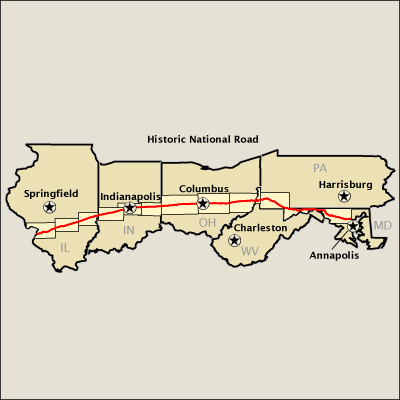
By 1818, the road had been completed to the Ohio River at Wheeling, which was then in Virginia. Eventually, the road was pushed through central Ohio and Indiana, reaching Vandalia, Illinois, in the 1830s, where construction ceased due to a lack of funds. The National Road opened the Ohio River Valley and the Midwest for settlement and commerce.
Twenty feet wide and occupying a 66-foot right-of-way, the National Road was built in layers 12 to 18 inches deep, with larger stones on the bottom, smaller ones on top, and gravel and soil covering the surface. Construction of the 632 miles of the National Road, from Cumberland, Maryland, to Vandalia, Illinois, cost the U.S. government almost $7 million.
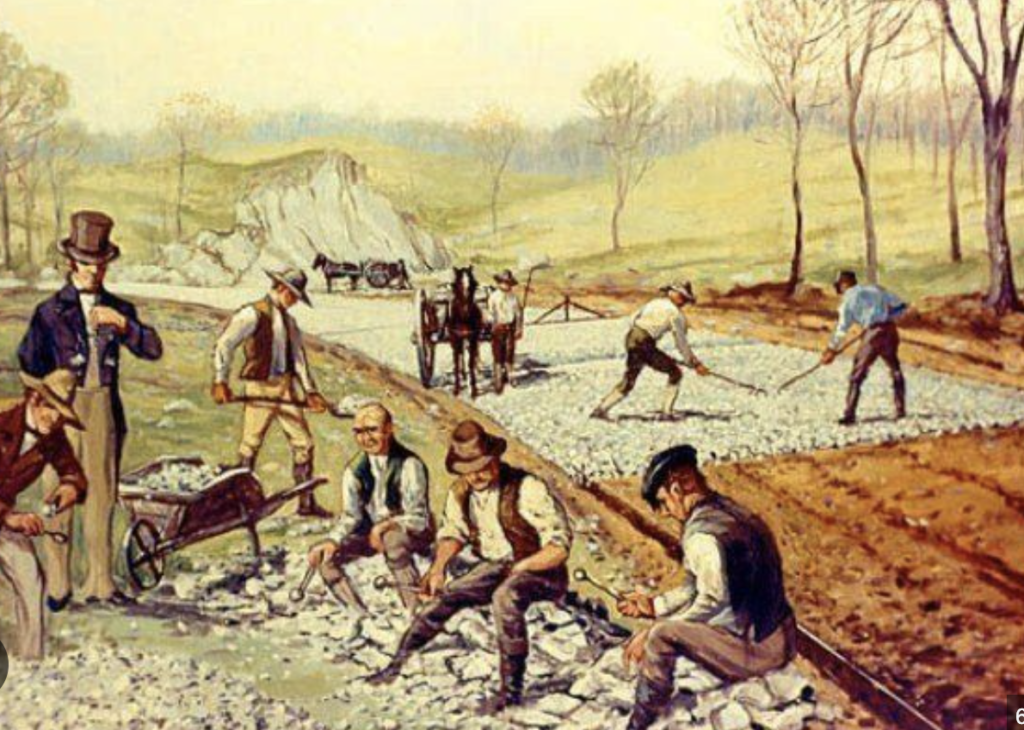
After the Financial Panic of 1837 and the resulting economic depression, congressional funding ran dry. Construction was stopped at Vandalia, Illinois, the then-capital of Illinois, 63 miles (101 km) northeast of St. Louis across the Mississippi River.
Traffic
The opening of the National Road saw thousands of travelers heading west over the Allegheny Mountains to settle the rich land of the Ohio River Valley. Small towns along the National Road’s path began to grow and prosper with the increase in population. Many small towns and villages along the road contained taverns, blacksmith shops, and livery stables.
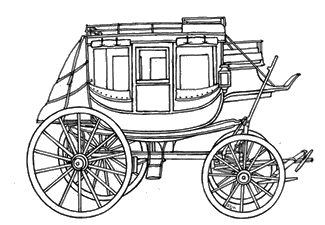
Taverns were probably the most important, and numerous businesses found on the National Road. It is estimated there was about one tavern every mile on the National Road. There were two different classes of taverns on the road. The stagecoach tavern was one type. It was the more expensive accommodation designed for the affluent traveler. Mount Washington Tavern was a stagecoach tavern. The other class of tavern was the wagon stand, which would have been more affordable for most travelers. A wagon stand would have resembled a modern “truck stop.” Regardless of class, all taverns offered three basic things: food, drink, and lodging.
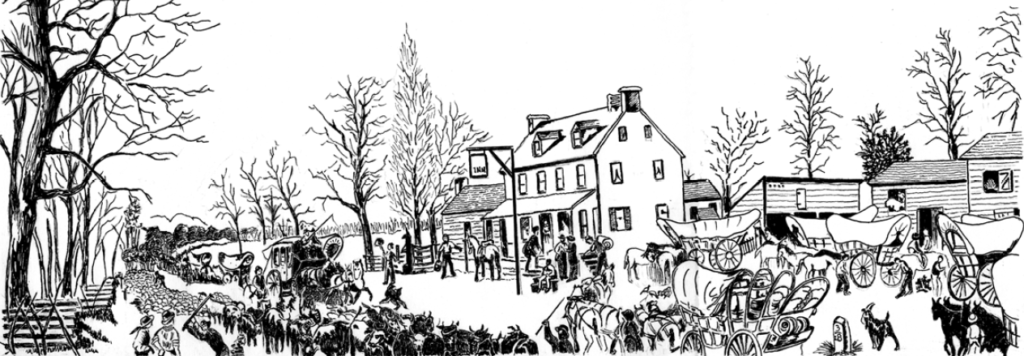
During the heyday of the National Road, traffic was heavy throughout the day and into the early evening. Almost every kind of vehicle could be seen on the road. The two most common vehicles were the stagecoach and the Conestoga wagon. Stagecoach travel was designed with speed in mind. Stages would average 60 to 70 miles in one day.

The Conestoga wagon was the “tractor-trailer” of the 19th Century. It was designed to carry heavy freight both east and west over the Allegheny Mountains. These wagons were brightly painted with red running gears, Prussian blue bodies, and white canvas coverings. A Conestoga wagon, pulled by a team of six draft horses, averaged 15 miles daily.

Decline of the National Road
The National Road, in many places known today as Route 40, began to fade. By the early 1850’s technology was changing the way people traveled. The steam locomotive was being perfected, and soon railroads would cross the Allegheny Mountains. The people of Southwestern Pennsylvania fought vigorously to keep the railroad out of the area, knowing the impact it would have on the National Road. In 1852, the Pennsylvania Railroad was completed to Pittsburgh, and shortly after, the B & O Railroad reached Wheeling. This spelled doom for the National Road. As the traffic quickly declined, many taverns went out of business.

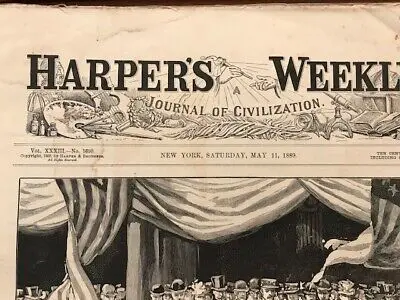
An article in Harper’s Magazine in November 1879 declared, “The national turnpike that led over the Alleghenies from the East to the West is a glory departed…Octogenarians who participated in the traffic will tell an enquirer that never before was there such landlords, such taverns, such dinners, such whiskey…or such endless cavalcade of coaches and wagons.” A poet lamented “We hear no more the clanging hoof and the stagecoach rattling by, for the steam king rules the traveled world, and the Old Pike is left to die.”
Revival of the National Road
Just as technology caused the National Road to decline, it also led to its revival with the invention of the automobile in the early 20th century. As “motor touring” became a popular pastime the need for improved roads grew. Many early wagon and coach roads such as the National Road were revived into smoothly paved automobile roads. The Federal Highway Act of 1921 established a program of federal aid to encourage the states to build “an adequate and connected system of highways, interstate in character.” By the mid-1920s, the grid system of numbering highways was in place, thus creating US Route 40 out of the ashes of the National Road.
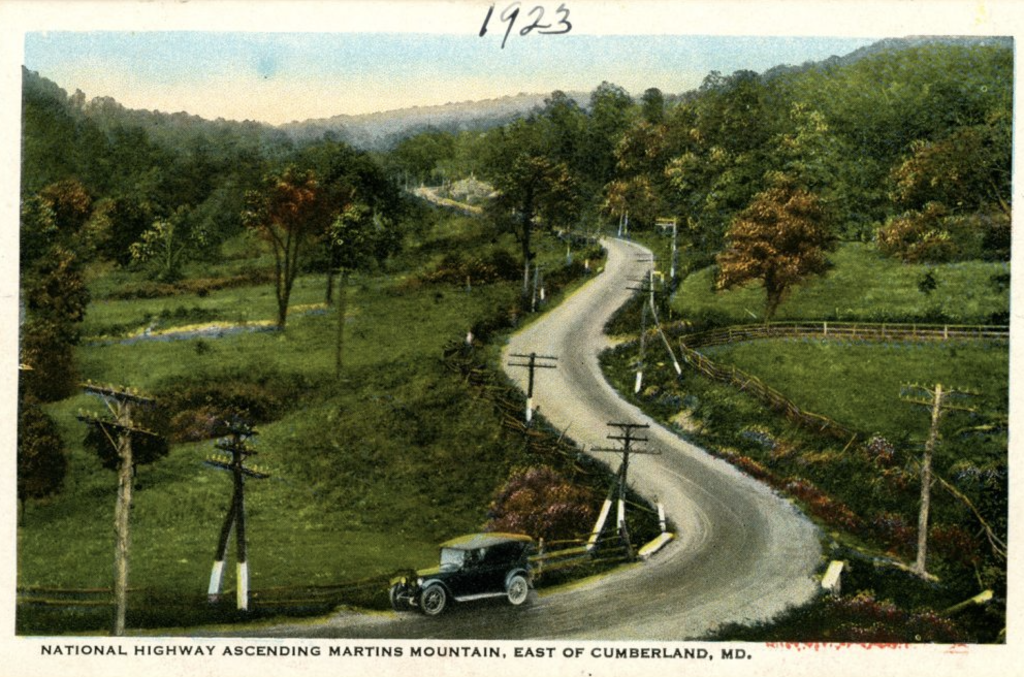
Due to the increased automobile traffic on US Route 40, a new network of businesses grew to aid the 20th-century traveler. The stage taverns and wagon stands were replaced by hotels, motels, restaurants and diners. The service station replaced the livery stables and blacksmith shops. Some of the National Road era buildings regained their new life as restaurants, tourist homes, antique shops, and museums. Route 40 served as a major east-west artery until the Federal-Aid Highway Act of 1956 created the interstate system as we know it today. With the opening of the Interstate Highways, much traffic was diverted away. The significance of the National Road and its role in opening population growth to the West cannot be underestimated.

Welcome to 3-Minutes A Day University, where you can learn a little about a lot of things every day in three minutes or less. We help you expand your knowledge and understanding of the real world, and 3-MAD University is tuition-free. Our wide-ranging syllabus includes a fascinating insight into topics including Health and Medicine, Science, Sports, Geography, History, Culinary Arts, Finance and the Economy, Music and Entertainment, and dozens more. You will impress yourself, your friends, and your family with how easy it is to learn facts and perspectives about the world around you. One topic you will never find covered is politics. We hope you enjoyed the previous three minutes. If you liked this post, please pass it along to a friend.
Was this email forwarded to you? Subscribe Here.
© Copyright 2024. 3-Minutes A Day University All Rights Reserved. Unsubscribe

